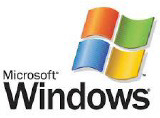However, thats a slight improvement over last year
-
Middle-income households are regaining ground in the U.S. housing market but just barely.
-
Only 21.2% of homes are affordable to households earning $75,000 annually, less than half of pre-pandemic access.
-
Cities in the Midwest and South show the strongest gains, while high-cost coastal metros continue to struggle.
The spring housing season is bringing a glimmer of hope for America's middle-income families, but the road to affordability remains steep. According to the 2025 Housing Affordability & Supply Report, released jointly by the National Association of Realtors and Realtor.com, the share of homes affordable to households earning $75,000 annually rose slightly in March to 21.2% up from 20.8% a year earlier.
Its the biggest year-over-year gain of any income group. Yet it still paints a stark picture: before the pandemic, these buyers could access nearly half the homes on the market.
Not enough affordable options
Nationwide, for-sale housing inventory grew nearly 20% year-over-year, offering signs of a market in transition. But the growing stock hasnt translated into widespread affordability not yet. The report underscores a troubling mismatch between prices and incomes, especially for buyers in the $50,000$100,000 range.
The housing market is at a turning point, said NARs Nadia Evangelou. More homes are hitting the market, and it's encouraging to see the greatest housing-supply gains among middle-income home buyers. But she warned that inventory growth has yet to match the scale needed for market balance.
To be in balance, buyers earning $75,000 would need access to 48.1% of the housing stock. That would require an additional 416,000 homes priced at or below $255,000 listings that remain in short supply in most parts of the country.
First-time buyers still sidelined
The outlook is even bleaker for households earning $50,000, roughly one-third of the U.S. population. These buyers can now afford just 8.7% of homes, down from 9.4% last year, and a far cry from the one-in-three access needed for a balanced market. Fixing that gap would require 367,000 listings priced under $170,000.
For many first-time home buyers, navigating the current housing market still feels like window shopping, Evangelou said.
Even households earning $100,000 once considered comfortably middle class face a tight squeeze. They can afford only 37.1% of listings, down dramatically from 64.7% pre-pandemic.
Regional bright spots
The Midwest and South are emerging as hubs of housing affordability progress. Cities like Akron, Youngstown, and Pittsburgh now come close to meeting healthy supply benchmarks, while Raleigh, Des Moines, and Columbia, S.C. are making substantial strides.
In total, 30% of the 100 largest U.S. metro areas are now considered Areas Getting Closer to Balance, meaning their housing affordability gaps are narrowing to within 10 percentage points of a balanced market.
We still dont have an abundance of homes affordable to low- and moderate-income households, said Danielle Hale, Realtor.coms chief economist. But some of the progress has been significant.
, , , ,
Posted: 2025-05-19 13:30:41




















